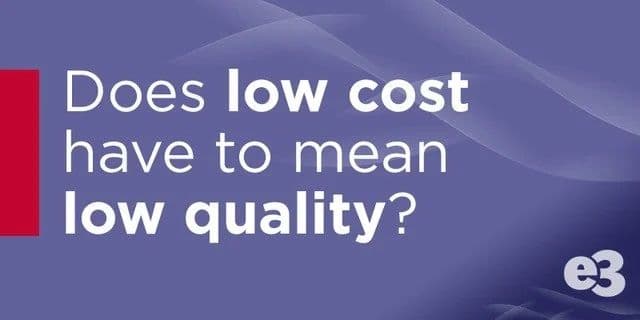Does Low Cost Have to Mean Low Quality?

When a patient is tested for hearing loss, and the results indicate that they need hearing aids, the first question they will likely ask you is “how much are they going to cost?” Unfortunately, many hearing aid models aren’t cheap and most health insurance companies don’t cover them. However, there are low-cost options that can be considered, and there will be even more once OTC hearing aids arrive in 2020.
Of course, with these low-cost options comes another common question. “Will the cheaper hearing aids still effectively help me hear better?”
Lifestyle is a huge factor
Before purchasing a hearing aid, people must consider the type of workplace environment they are subjected to, what recreational activities they like to partake in, social settings they frequent, and much more. Are they heavily involved with the community? Do they lead an active social life? Each of these factors must be considered when buying hearing aids.
If you have a patient who prefers staying indoors, then you can recommend a basic or mid-range hearing aid, which is generally less expensive. On the other hand, if your patient is socially active, frequently involved in business meetings, and is on the phone many hours per day, then a more premium hearing aid with advanced speech-in-noise features is best suited for them.
The big four features all hearing aid wearers need
To be a low-cost, high-quality hearing aid, these essential features must be included: Digital Sound Processing, Noise Reduction, Feedback Cancellation, and at least three Sound Environment Settings. Most of your patients will find that a hearing aid offering these features will provide what they need to hear better in just about every situation.
According to the Consumer Reports Hearing Aid Guide published in June 2018, 33 percent of hearing aid wearers surveyed stated that having multiple sound environment settings was the feature most important when they purchased their hearing aids. Twenty percent indicated that automatic noise level adjustment was “most important” to them. Feedback suppression, digital noise reduction, a telecoil sensor option, and directional microphones also ranked high in features most desired.
Be your patients’ guide through all hearing aid options
Get to know your patients better. Find out the kind of lifestyle they lead. If they’re more active and social, let them know that a more expensive, state-of-the-art hearing aid is the way to go. If they are less active, then recommend a basic hearing aid or one considered to be mid-level.
Of course, the severity of the hearing loss is a major factor as well. If someone has severe hearing loss, a premium hearing aid with advanced features is the right option, regardless of how active they are. If they have mild-to-moderate hearing loss, on the other hand, a more affordable option will be just fine.
So, to answer the question, low cost doesn’t necessarily have to mean low quality. It all depends on the wearer.
